Pizza is not only a dish of Italian cuisine but also an appetizer that takes very little time to prepare, as soon as you have fresh dough at your hand to bake homemade pizza. Poolosh pizza dough will help you!
The filling can be very diverse, so every housewife strives to bake this delicacy better than in the most famous restaurants. However, the secret of a good pizza lies precisely in the way the dough is kneaded. And quite often a soft, airy base with a delicious crust can be made on a poolish pizza dough.
There are many ways to improve the flavor profile of pizza dough and give it new quality characteristics, such as trying semi-fermented starters rather than just making regular pizza dough.

What Is Poolish Pizza Dough?
According to the official wording, poolish is a semi-finished product of bakery production, obtained by kneading from bread flour or grain products prepared for production, water, and baker’s yeast in accordance with the pizza dough recipe and technological regime, consumed for making pastry base.
In other words, we borrow some of the flour from the main batch, also “steal” some active dry yeast, add water and pre-ferment it all for a few hours.
What is it for? After all, it is much easier to mix all the ingredients at once and knead the pizza dough. The fact is that during the fermentation of the starter, many transformations occur: gluten proteins swell, and enzymatic reactions take place. As a result, the pizza dough begins to acquire a “character”, which is expressed in the rich taste and aroma of the finished product.
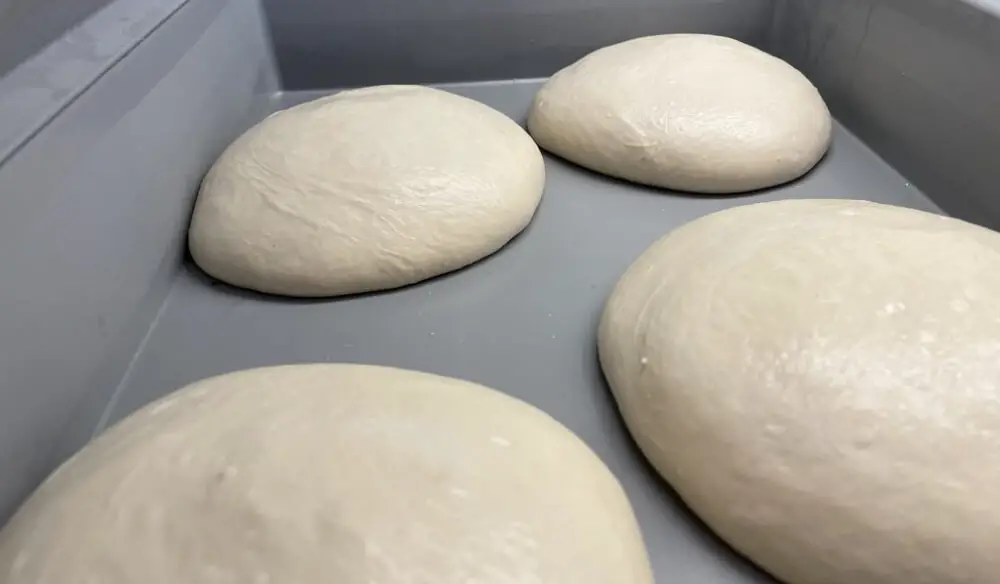
In general, pre-fermented yeast semi-finished products can be divided into several groups:
- Italian biga;
- Poolish;
- French ripe dough.
It must be said that these three friends are not technically sourdough, as they are dominated by yeast.
So, we found out that poolish is a pre-fermented semi-finished product or “preparatory” starter, the first stage in the preparation of bakery products.
When making yeast bread, the base is fermented in advance. The point is that during the fermentation process, more yeast and acids accumulate in it, and, as a result, a rich set of flavoring substances appears.

This is what brings the poolish and sourdough starter together, and they are often confused. In both semi-finished products, acids accumulate (provided that the yeast base contained some yeast and matured for about 6-18 hours), which has the best effect on the quality of the bread. Sourdough starter affects the pizza dough in a similar way, only it reveals its flavor even more strongly and brighter.
Another difference between pre-fermented semi-finished yeast products and sourdoughs: the former, unlike sourdough, have a limited lifespan. The sourdough can be maintained for many years.
In this article, you will find a poolish pizza dough recipe, which sourdough starter makes your pizza crust crispier, how to make poolish pizza, why pizza dough with poolish is better than others, etc.
If you wanted to step up your pizza game and were looking for a perfect pizza dough recipe, then you’ve come to the right place.

Pre-fermented Sourdough Starter
Poolish dough
Poolish is a mixture of water and flour in equal amounts (100% hydration) with a small amount of yeast added. Depending on the ripening conditions, the amount of yeast varies from 2% to 0.05% by the weight of flour in the semi-finished product (polish). So, for example, if you pre-ferment it for 2 – 3 hours indoors, the yeast dosage will be 2%. With an increase in the duration of fermentation, the dosage of yeast is reduced: 4 hours of fermentation – 1% yeast, 6 – 8 hours – 0.05% yeast.
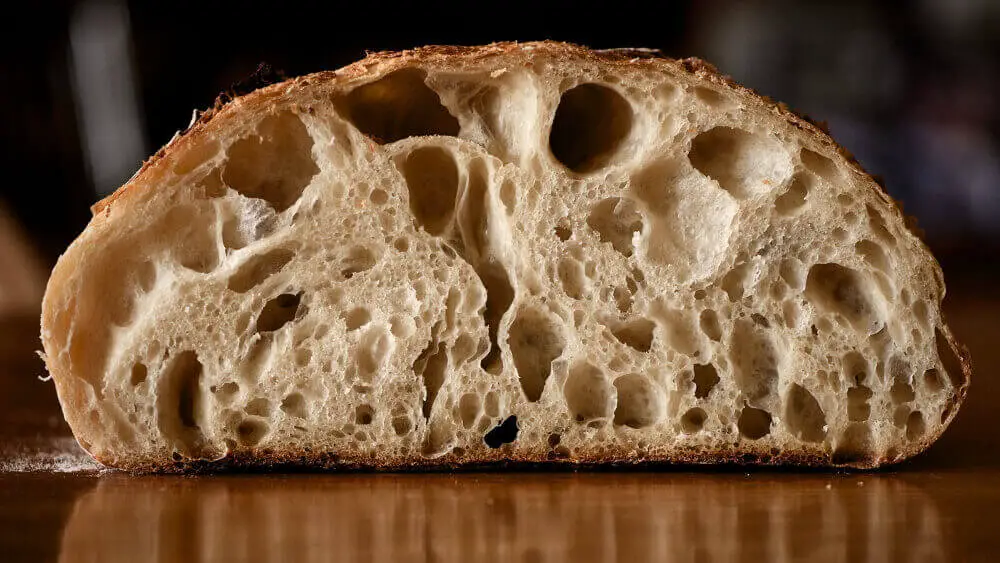
It is important to ensure that peroxidation of the semi-finished product does not occur. To do this, you can put it in the refrigerator or add part of the prescription amount of table salt when making pizza dough. Since the ratio of flour to water is 1:1, poolish has 100% moisture and is more like pancake dough.
The activity of proteases (enzymes that cause protein breakdown) in it is quite high. These enzymes help to increase the extensibility of the dough: firstly, the dough will be kneaded faster and easier, the product will be easier to mold, and secondly, it will turn out to be more voluminous.
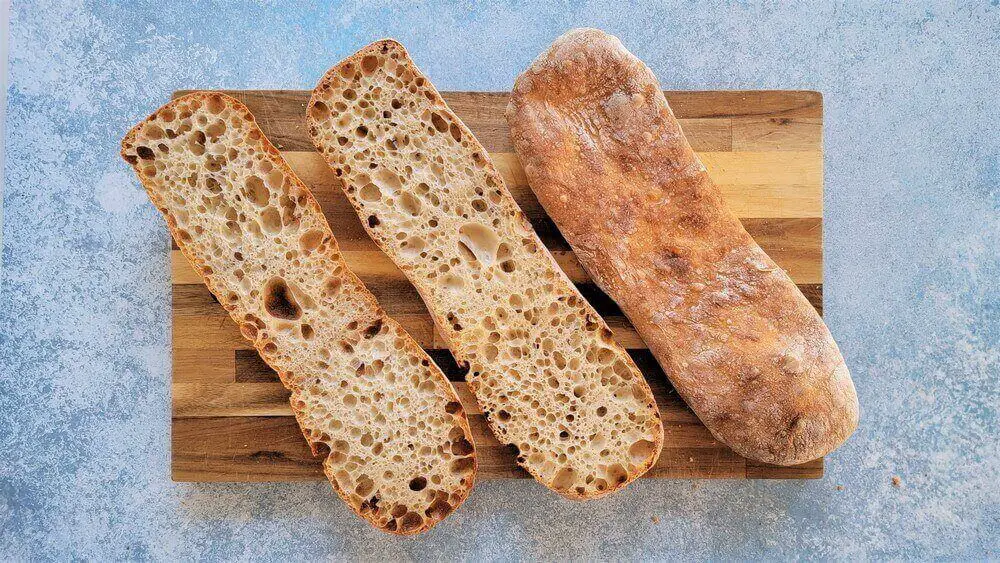
Italian biga
Biga is a general Italian term for various types of sourdough. It can be firm in consistency (50-60% hydrated) or almost as strong as a poolish with a bit of yeast. A traditional biga is just a very thick base with a moisture content of 50 – 60%, into which, depending on the room temperature, 0.1 – 0.2% yeast is added.

The dosage of yeast is determined by the ambient temperature and the maturation time of the sourdough. Biga can ripen both in the refrigerator and at room temperature. Products on biga have a richer taste, aroma, and color compared to products on publish.
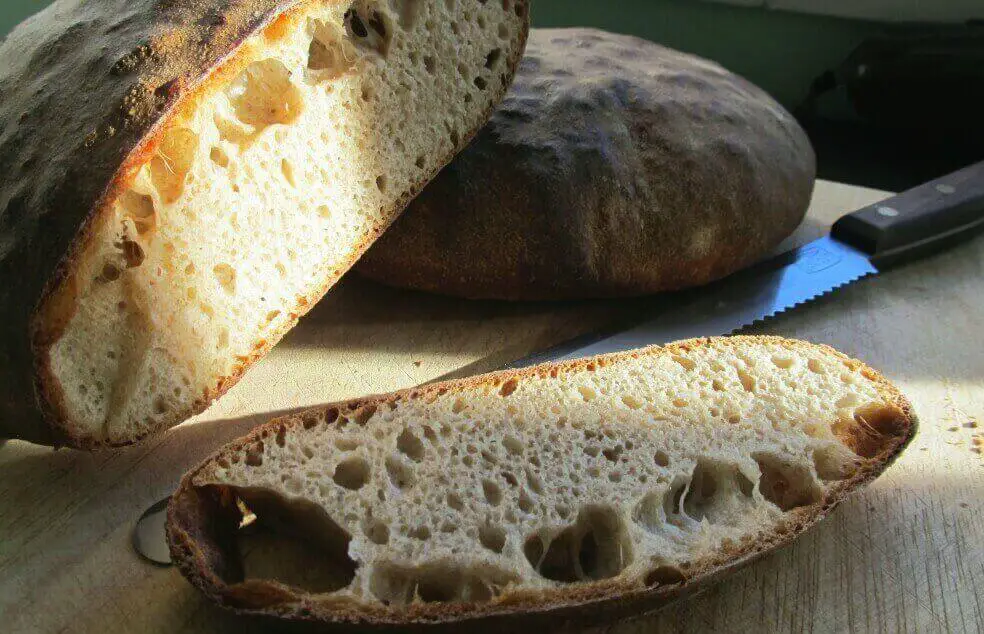
Pate fermenter (ripe base)
The ripe dough is just a piece of wheat flour dough that has been saved from the last batch and added to the next batch. The fermented dough can be stored in the refrigerator for no more than 48 hours after which its ability to ferment noticeably deteriorates. To ensure good fermentation of the dough and obtain bulky products, active dry yeast can also be added during dough kneading.
Poolish is the most liquid-like sourdough starter.
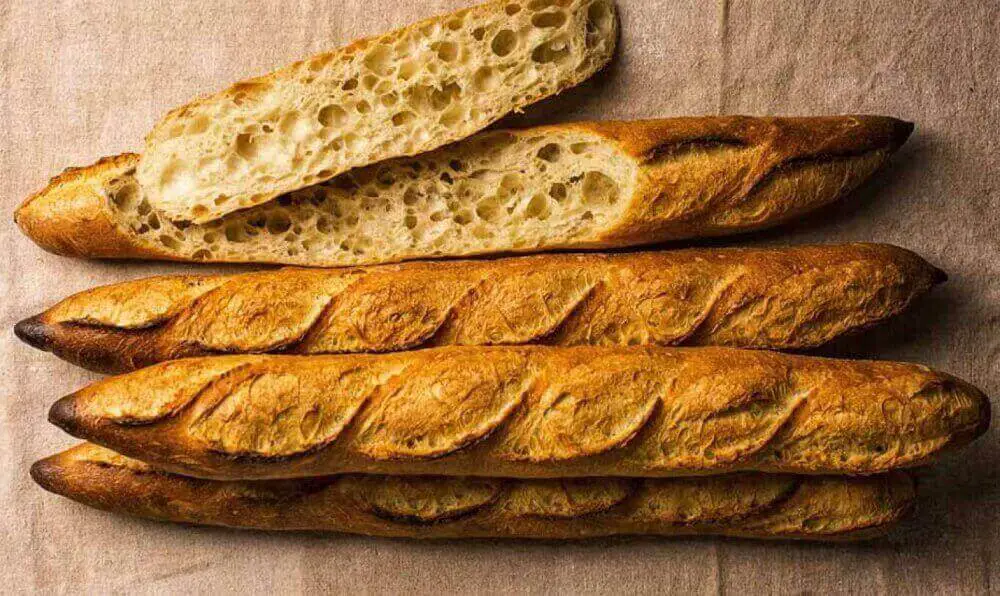
History of Poolish
There is no consensus on the time of creation and the author of this starter, but the most popular version says that this method of making bread was invented in Poland in the 1840s (hence its name – Poolish). Bread baked with poolish had an airy fine-pored structure, a rich aroma, and a less sour taste than our levain sourdough bread, which was common at that time. Therefore, this method quickly became popular with bakers in Austria and later in France.
Poolish is typically used in French bread, ciabatta, baguettes, and of course pizza, and contains an equal ratio of total flour weight to water. The percentage of yeast varies depending on the temperature and fermentation time, which ranges from 3 to 15-16 hours.
At room temperature, the following proportions are used:
- 0.7 – 1% yeast – fermentation time 8 hours
- 0.3 – 0.6% yeast – fermentation time 12 hours
- 0.1 – 0.25% yeast – fermentation time 16 hours
What kind of yeast to use and how much of it is in the packet is described here.
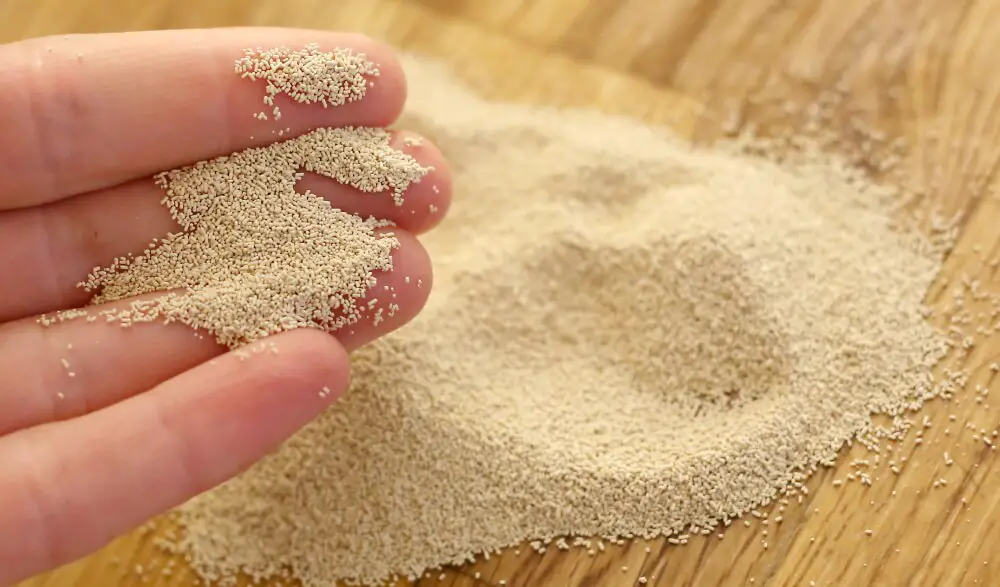
What Does Poolish Do With Pizza Dough?
Reduces kneading time due to the content of active proteases (enzymes that cause protein breakdown), and also increases elasticity and leads to an increase in poolish pizza dough volume.
Through long fermentation and natural maturation, poolish provides an excellent aroma and flavor that makes the final dough unique. What’s more, pizza or bread made with poolish pizza dough is more easily digestible.
A chemical reaction between amino acids and sugars occurs when heated, and provides a rich color and cracking of the crust.

In addition to fermentation inside the starter, the dough is saturated with lactic bacteria and beneficial yeast. In the dough, they multiply and give it a pleasant aftertaste. If you use whole grain all-purpose flour when preparing the base, the crust will be with a large number of vitamins and trace elements.
With the help of fermentation, inhibitors are broken down, so the crust turns out lush, and it keeps its shape. The benefits of pre-fermented dough have been proven by scientists, though it requires special care. If handled properly, the starter will last for several months.
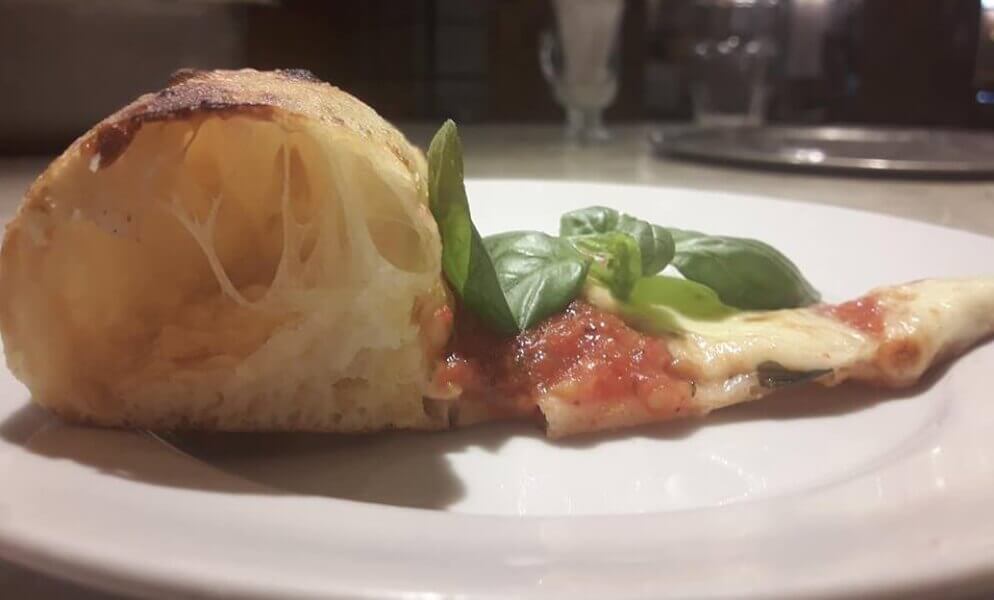
Tips For Working With Poolish
If you are working with a pre-fermented pizza dough such as poolish, make sure your dough is not “overripe”. This is especially important if your final pizza dough contains a higher percentage of sourdough starter (50% or more), because over-aging will break down the gluten strands formed during the fermentation process, and you will end up with inelastic and stubborn pizza dough.
We recommend the so-called overnight fermentation method when you let the sourdough rest overnight for 12-16 hours. This method requires the use of less yeast, increases maturation time, and also helps the sourdough starter acquire its unique nutty flavor.
You should cold ferment poolish to avoid over-fermentation, which wouldn’t be the best option for poolish pizza dough. Make sure to not add too little yeast. After taking it out of the fridge let it rest for half an hour before adding it to the main dough. You can smear it with olive oil. The active dough should be wet, you can just sprinkle a little more flour before starting to cook your pizza.

Poolish In The World of Pizza
What is the difference between a poolish sourdough starter and the equally popular biga sourdough? The alveoli in the finished product will not be as large, and the crust will be ruddier and crispier. Most often, pizzaiolo prefers to use poolish when they cook pizzas that are baked in a pan rather than in a pizza oven(for example, Detroit or Telia) or classic types of thin crispy crust pizza (for example, classic Margherita or Marinara).
The use of the poolish pizza dough allows you to achieve an optimal result in terms of pizza dough plasticity, which is important when stretching, in addition, it becomes possible to reduce the kneading time due to the high proportion of fermented flour.
The fermentation method is not only used for baking. It is also used in the creation of alternative proteins. The list of fermented foods includes meat, dairy products, beans, and more. There is even the Impossible Burger, made from plants.

Poolish Pizza Dough: FAQ
Is poolish good for pizza?
A pre-fermented pizza starter will only benefit your pizza. After such a pizza, you will not feel bloated, as happens after regular pizza. Studies show that even people with gluten intolerance do not experience discomfort after eating poolish pizza.
Poolish pizza dough digests more easily. The pH of the dough is 4. The indicator is normal, therefore, pathogenic microorganisms do not multiply in such conditions.
As a result, the assimilation of a poolish bakery does not take much time. Valuable protein is digested in the human body by 97-98%. During fermentation, gluten is destroyed, which causes allergic reactions in many people. Gluten residues are easier to digest and do not harm pizza lovers.
Is biga or poolish better for pizza?
On poolish pizza dough, the pizza crust is crispier and ruddier. Poolish pizza dough prep time is a little longer than biga, but it’s totally worth it. Poolish, unlike biga, is very wet, which helps to make the pizza crust softer and airier. Both are great choices for making amazing pizza crust, depending on your personal preference and which texture you like best.
What is the poolish method?
Poolish is a liquid pre-enzyme, also known as Pâte fermentée. Poolish is traditionally used by Polish bakers, Austrians, and French for baking different pastries. You should pre-ferment poolish for a few hours before making pizza dough. Its moisture content is 100% with an equal amount of flour and water.
Do you need sugar for poolish?
You can add some sugar, but this is optional. You may need sugar to test the effectiveness of your yeast, whether it’s instant yeast or any commercial yeast.
Poolish Making Peculiarities
Liquid poolish pre-ferment is made from equal parts bread flour and water, and a small amount of yeast.
Traditionally, the volume of pre-fermented product required for baking is calculated based on the following data:
Bakers use a sourdough starter from 20 to 80 percent of the total ingredients.
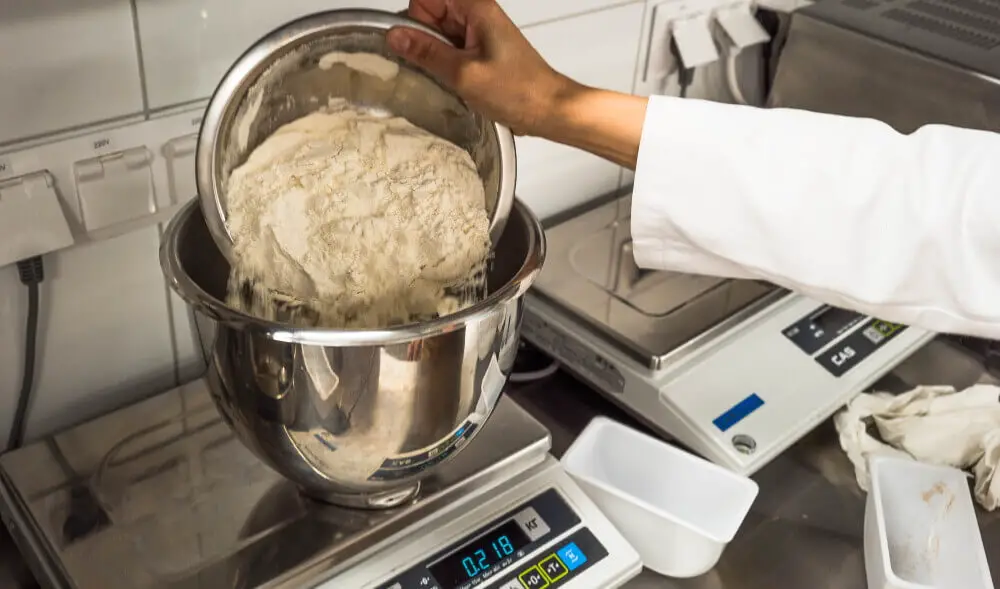
When kneading poolish, you need the same amount of water as flour. This creates 100% moisture and provides a fluid consistency. The percentage of dry yeast depends on how long the fermentation should be. The smaller they are, the slower the process.
The poolish pre-ferment is fermented at room temperature until volume increases. At its peak, the volume begins to subside slightly and the surface of the base becomes wrinkled. This process can take from 3 to 15 hours depending on the amount of added yeast cultures.
The rate of fermentation is controlled by the following factors:
- the acidity of the mixture
- temperature,
- raw material quality,
- water content.
If the temperature in the room is warmer, reduce the amount of yeast or water temperature.

Poolish Pizza Dough Recipe
Poolish recipe
- Pizza flour – 2.2 lbs.
- Water – 4 cups.
- Dry yeast – 0,03 oz.
- Mix everything in a large bowl. The consistency of the resulting base should be homogeneous, similar to a thick dough for pancakes.
- After kneading the dough in a large mixing bowl, leave it in the mixer, cover with a plastic wrap, and pre-ferment it for 16-20 hours at room temperature.

- When preparing poolish, it is important to monitor the time and the amount of yeast, the more instant yeast, the faster the dough reaches the peak and the less it is at this peak. At the same time, the dough, set at night, can hold out at the peak for several hours.
- The moment of maturation of the poolish is determined by its appearance – the starter should increase in volume, and its surface should be covered with small bubbles. If there are signs that the liquid dough has increased in volume and then fallen off (this can be seen from the traces of the dough adhering to the walls of the mixing bowl), then the sourdough is ready. Peter Reinhart also recommends checking readiness in the following way: hit the edge of the bowl hard, if the dough falls off, then it is ready.This poolish pizza dough recipe requires just a bit of patience.
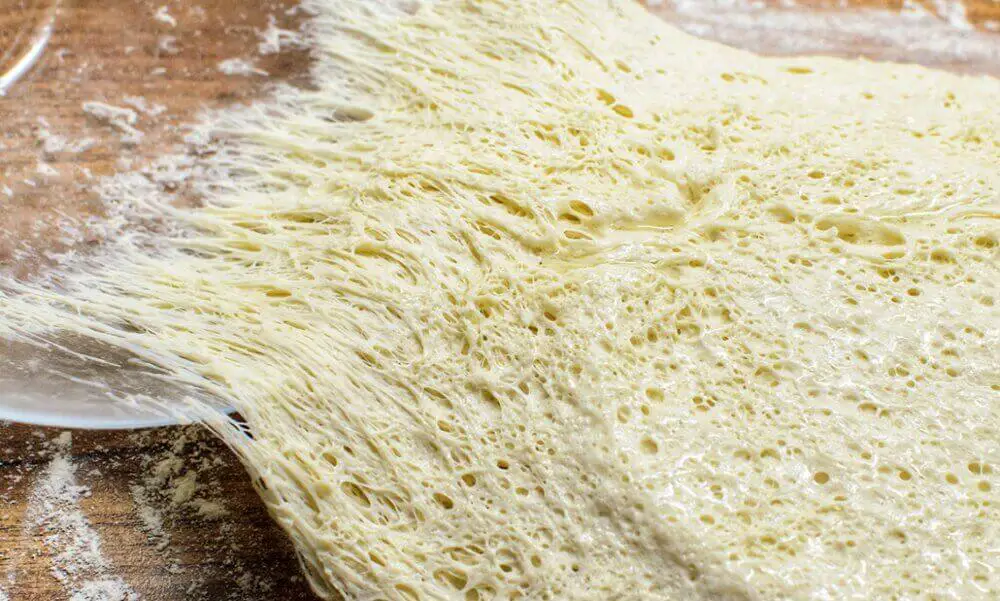
Poolish Pizza Recipe
We take out our sourdough starter from the refrigerator and add the remaining ingredients for the pizza dough to the poolish mixture: (all for 2 pizzas 0,5 lbs each.)
- 1) 0,3 oz of fine table salt, directly into the poolish
- 2) 3,8 oz s of all-purpose flour, directly into the poolish (if you want to increase the bubbles even more, then add the remaining 3,8 oz of flour, add another 2 grams of instant yeast and stir in flour, I did not add yeast).
- Knead the pizza dough until the moment when it begins to treacherously stick to you.
- From now on, we forget about the refrigerator, we do everything at room temperature.Making your dough stronger
- Now let’s start a process called “developing the dough”, making it strong. We cover our wet dough and leave it for 20-30 minutes. Then we grease our hands a little with olive oil and begin to fold the dough from the edge to the center.
- Thus, we begin to intertwine gluten threads with each other, i.e. reinforce our dough. This will allow our yeast to blow bubbles, and also the dough will not tear when the pizza is stretched. After folding the dough, create a dough ball.
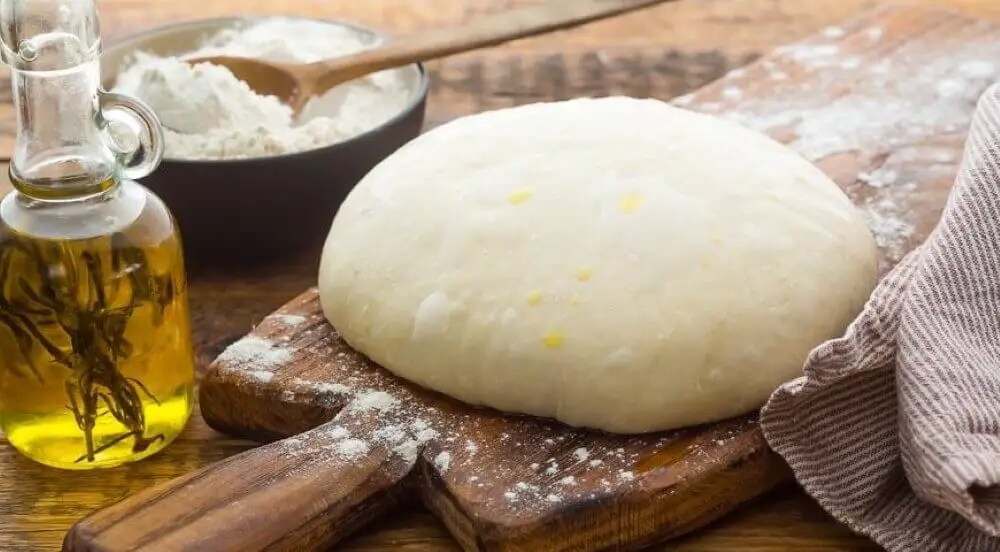
- We wait another 20-30 minutes and repeat the procedures for folding and forming a dough ball. At this point, you will notice how your dough has started to change.
- Let the dough rest for 10 minutes for bulk fermentation and then start making portioned dough balls. We form two dough balls with surface tension, smear them with olive oil and put them in a container. When you make dough balls, grease your hands with a little bit of olive oil.
- We wait from an hour to three for a dough ball to rise. The exact time is difficult to say, as it depends on the temperature in the room.
- When the pizza dough is sufficiently “rested” and stretched without tearing, start stretching it with both hands on a lightly floured surface. In the process of stretching, turn the dough so that the thickness of the workpiece is approximately the same. Ultimately, the dough piece should be about 40 cm in diameter and fairly thin, except for thickened edges that create a rim about 2.5 cm thick.
- After shaping, there is no need to proof the pizza dough, it can be baked immediately. Transfer the pizza dough to a baking shovel sprinkled with coarse cornmeal or semolina.
- Spread the topping of your choice on the top surface, leaving the edges empty, and spread a little olive oil.

Baking pizza
- Ideally, the temperature of the pizza oven should be 370 degrees.
- Bake pizza literally 7-10 minutes to the desired degree of roasting in a pizza oven. Would be great to use pizza stone as it bakes the pizza evenly. A pizza stone is generally very beneficial to have.

It’s a great poolish pizza dough recipe, especially for those who have gluten intolerance or feel bloated after eating pizza.
What gluten is and what’s wrong with it for some people is perfectly illustrated in the TED-Ed video.
Wild Yeast Poolish Pizza Dough Recipe
Put all the ingredients for the first stage in a bowl (all-purpose flour, a little bit of honey, and warm water), and mix well. Cover the bowl with plastic wrap, secure it with an elastic band, and pre-ferment it in a warm place for 48 hours.
Fermentation will begin, the dough will begin to bubble, emit a strong alcoholic smell, and the top of the dough will darken. In order for yeast to grow and multiply, they need to be fed. For this, we have the second stage.
Add flour and water intended to the fermented dough. Mix well and cover with a film, securing with an elastic band. Leave in the same warm place for another day. The dough should rise and emit a sweet smell. Now you can proceed to the third stage.
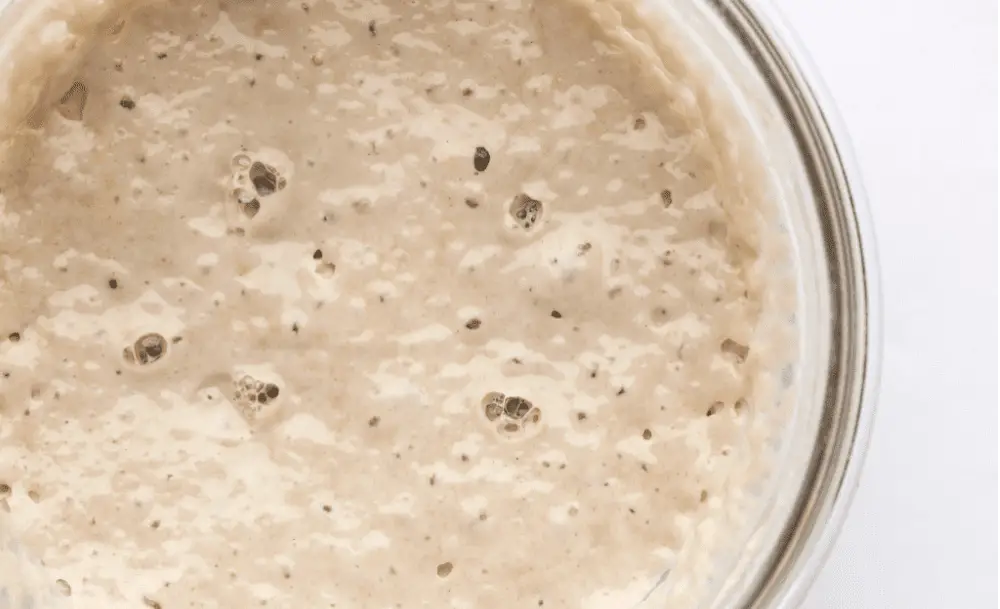
To 0,4 lbs of dough add 0,9 lbs of flour and 0,4 lbs of warm water. Knead on a lightly floured surface. You will get a fairly thick dough. Also, cover it with a film and leave it in a warm place for 12 hours. The dough will again begin to rise strongly. We proceed to the fourth stage.
Now we need to slow down the fermentation a little and let it ripen. The bowl with the dough needs to be moved from a warm place to a cooler one for cold fermentation. Leave the dough there for two days, if you want the taste of dough to be sourer, you can leave it for 5 days.
You can see what cold fermentation is in our last post.
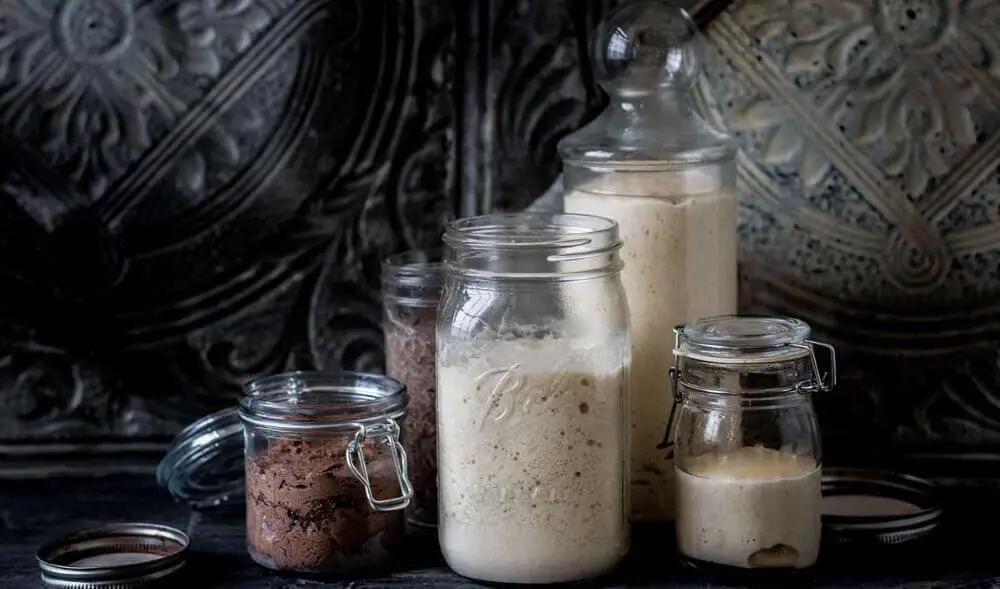
The sourdough will be ready when it has a creamy color, it will have a lot of small bubbles. It should be sticky to the touch and with a characteristic sour-alcohol smell.
Feeding wild yeast is simple: Weigh the sourdough and add the same amount of water and twice as much flour.
Before using the starter for baking, take it out of the refrigerator and let it warm up. If the starter has become very dense, this means that it has frozen, you just need to get it out of the refrigerator and leave it for 3-4 hours to warm up and come to life.
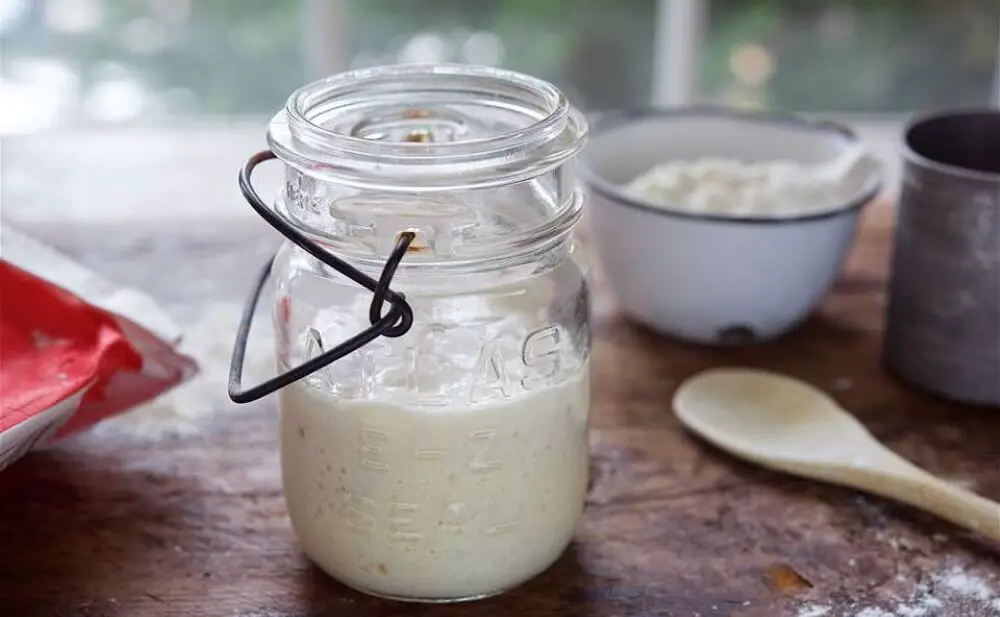
If the starter has become watery and with a sharp sour smell, this means that it is overripe, then you need to scrape off the top layer and discard it. Leave the middle where the dough looks like a honeycomb. A pleasant smell should come from the middle. Feed as usual. You can use it for any pizza dough recipe that requires fresh yeast.
Thus, you will always have fresh yeast to make great pizza dough, it is suitable for all types of pizza such as Neapolitan style pizza, and for all types of pizza ovens.
Having your own active yeast adds so much more fun to the usual pizza-making process, than when using dried yeast.
To make Neapolitan pizza dough all you need to do is take the dough we discussed above and roll it out as thin as possible, then just take some olive oil, tomato sauce, cheese, and basil. Can be baked in a regular oven or a wood-fired oven. Enjoy the best pizza made with your own hands!

Pros of making pizza on a poolish basis:
- Dough-based bakery products are better digested and easier to digest.
- Baking has a lot of bacterial protein that is beneficial to the body.
- Bread contains the minimum number of inhibitors.
- The finished product has a longer shelf life than those made with other ingredients
Resume poolish pizza dough
In simple words, the poolish technology is a two-stage process of preparing dough, when at the beginning a semi-finished starter is prepared (by the way, without salt, butter, and sugar), and then the main batch takes place.

The process of kneading the dough is complex and long. However, the quality of a pizza based on this technology is much better compared to products made in an accelerated way, and the shelf life of dough on poolish naturally increases.
Homemade poolish pizza has excellent taste, it is lush and fragrant. Poolish prepared crust does not harm you.


hello, this is my first time making sourdough dough according to your recipe. I have to tell you that poolish pizza dough is so delicious. Your poolish pizza dough recipe is sure to be my favorite.